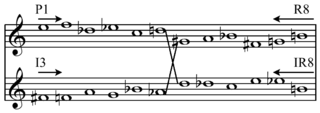| Look up permutation in Wiktionary, the free dictionary. |
In mathematics, permutation relates to the act of arranging all the members of a set into some sequence or order.

In mathematics, permutation is the act of arranging the members of a set into a sequence or order, or, if the set is already ordered, rearranging (reordering) its elements—a process called permuting. Permutations differ from combinations, which are selections of some members of a set regardless of order. For example, written as tuples, there are six permutations of the set {1,2,3}, namely: (1,2,3), (1,3,2), (2,1,3), (2,3,1), (3,1,2), and (3,2,1). These are all the possible orderings of this three-element set. Anagrams of words whose letters are different are also permutations: the letters are already ordered in the original word, and the anagram is a reordering of the letters. The study of permutations of finite sets is an important topic in the fields of combinatorics and group theory.
Permutation may also refer to:
- An alteration or transformation of a previous object or concept; see iteration
- Permutation, as a mathematical concept
- Permutation test in statistics
- Permutation (music), as a concept related to musical set theory
- Permutation (Amon Tobin album), 1998
- Permutation (Bill Laswell album), 1999
- "Permutation" (song), an instrumental song by the Red Hot Chili Peppers
Iteration is the repetition of a process in order to generate a sequence of outcomes. The sequence will approach some end point or end value. Each repetition of the process is a single iteration, and the outcome of each iteration is then the starting point of the next iteration.

In music, a permutation (order) of a set is any ordering of the elements of that set. A specific arrangement of a set of discrete entities, or parameters, such as pitch, dynamics, or timbre. Different permutations may be related by transformation, through the application of zero or more operations, such as transposition, inversion, retrogradation, circular permutation, or multiplicative operations. These may produce reorderings of the members of the set, or may simply map the set onto itself.

Permutation is the third studio album by Brazilian electronic music producer Amon Tobin and the second under his own name. It was released in 1998, just over a year after Bricolage. The album was a success for Tobin and found him playing sold-out shows at the Montreal Jazz Festival, the Knitting Factory in New York and the Coachella Valley Music and Arts Festival. He went on to release Supermodified in 2000.
| This disambiguation page lists articles associated with the title Permutation. If an internal link led you here, you may wish to change the link to point directly to the intended article. |





